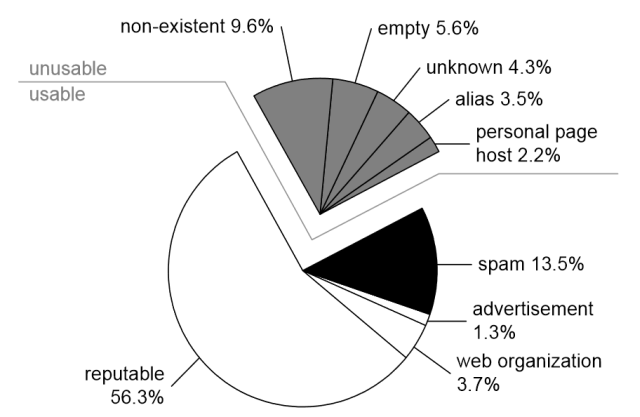Authority and Trustrank

Yesterday I discovered the original Trustrank paper from 2004. Trustrank is a term coined by some Yahoo engineers to describe a new algorithm to determine relevant search results.
The new thing about Trustrank is that it does not solely count links like PageRank it’s based on but it also relies on authority.
Authority is measured by the proximity to a group of seed sites that are deemed to be authority sites.
It sounds complicated but in the end it’s simple: Let’s say Adobe.com – the makers of Photoshop – is an authority site.
A site x linked by Adobe.com is thus more authoritative than a site y that has been linked by site x or a site z that hasn’t been linked by any of those, Adobe, x or y.
In this example y still inherits some authority from Adobe.com – Adobe trusts site x and site x trusts site y so that site y still must have some value.
Most people in the SEO industry assume that not only Yahoo employs Trustrank but Google as well without using the term maybe but inherently it’s the same concept.
How do you become an authority site? What are the actual factors of an authority site? When it comes to search they are:
- links from the good seed sites or sites linked by such seed sites
- domain age, the older the better
- domain history, has a domain changed owners, topics, been used or misused for low quality content
- branding, does the domain have a brand and how often does that brand or domain name get mentioned
- cluster, a site belonging to a cluster of similar sites dealing with the same topic or is it an island
- hub, does the site link out to many other sites and is resource rich
- social media saturation, being prominent on social sites with votes by power accounts
- frequency, how often does a site offer new content
- integrity, broken links and images, other errors, high load times
- bad neighborhoods, does a site contain links to low quality sites or gets linked by such sites
- filters, does a site deal with topics like xxx, gambling, generic medicines
These are some of the aspects that are most likely determining your authority on the Web both from the user and a search engine perspective.
Most of these qualities can be acquired by SEO 2.0 techniques while others require good old SEO (1.0) best practices.
For instance you can get links from seed sites by applying the SEO 2.0 way of establishing relationships with others in your industry and beyond.
On the other hand broken links require good old SEO 1.0 ways of checking them. Some of the above is not even considered SEO by many, for instance checking uptime and security measures.
You see there is much to do to become an authority site and to please an algorithm that employs some kind of Trustrank.
I’m not the scientific SEO guy so I might be not very accurate in this list above. It does not matter though. Why?
These are common sense aspects of a properly working website that won’t hurt your site even in case the SEO benefits were marginal.
Last updated: May 15th, 2018.

About the domain name age, do you see this as something that will continue to carry weight? With people buying old domain names just for this purpose, this isnt something that i see having a continued impact. Just a feeling ;)
Good point mat but domain age is here to stay. That’s why domain history has been added as ranking factor to make sure the sheer age is not misused.
[…] Authority and Trustrank, SEO 2.0 […]
“branding, does the domain have a brand and how often does that brand or domain name get mentioned”
I would really like to figure out how search engines determine a brand name.
I would have to assume that search engine’s would look at a unique phrase that is used many times on your website and also see if other websites are linking to you with that unique phrase.
I guess domain age, relevant high quality backlinks ar the two things that can be monitored by an algorithm better. For me, i’d say, domain age counts the most. The worst part about budding SEOs is that they may achieve anything but not Age, hence it should be an original factor to rank and evaluate.
I agree that a domain’s age is important. However, I feel there’s a very important factor that most SEOs don’t take into account: age of a backlink. Through me SEO adventures, I have found that the longer a backlink is in place, the more valuable it seems to be.
Domain age is important but only if the domain is older than say 5 years.
Authority and Trust is an excellent way of filtering out sites that rank from pure link volume. Thus this forces websites to actually provide real valuable content in order for Trusted sites to link to them
Hi there
Those do make sense, not really sure why everyone is obsessed with domain age on the comments mind, not like it something you can change !
I have found getting 1 link from an authority site in your niche is worth approximatly 200 crappy links. Possibly more. When your site has authority, you can make a new page and it ranks with even the mention of the word somewhere in the text.
[…] You link out to a site you trust in most cases, even if you disagree. There is even a so called Trustrank by Yahoo. Many people argue that Google uses a very similar concept to assign trust to websites. I […]